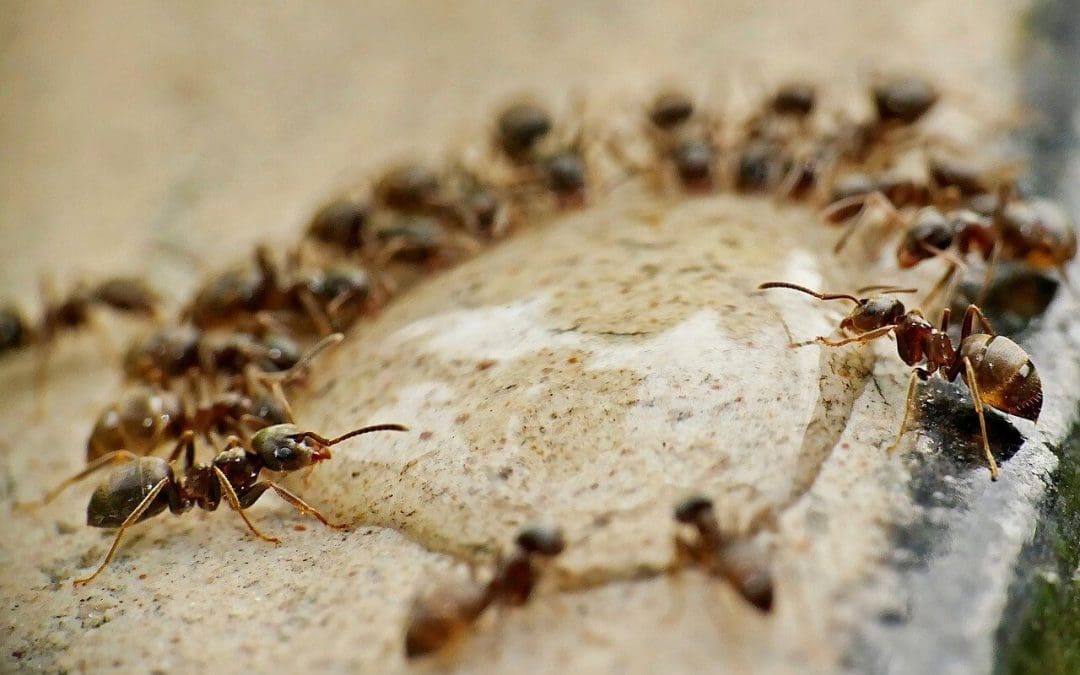Ants might be small, but when they show up in your kitchen, bathroom, or even marching across the living room, they are a real nuisance. There are several practical ways to get rid of ants, and most don’t require hiring a pest control service. If you’ve got ants and want to get rid of them quickly and for good, this guide will walk you through how to make that happen.
Figure Out Where They’re Coming From
The first step in dealing with ants is to figure out how they’re getting into your home. Follow their trail. Ants usually move in lines, so if you can trace them back, you’ll likely find a tiny crack, gap, or hole they are using to come inside. Look near windows, doors, baseboards, and anywhere plumbing or wiring comes into your home. Once you find the entry point, make a note of it. That’s where you’ll want to focus your efforts.
Clean Up What They’re After
Ants are motivated by food. Even a tiny crumb or a few drops of spilled juice can attract them. The cleaner your home is—especially the kitchen—the less appealing it becomes to ants. Wipe down counters regularly, sweep the floors, don’t leave dirty dishes in the sink, and store food in sealed containers. It’s also a good idea to take out the trash daily and rinse out your recycling.
Pet food also attracts ants. If you leave food out for your dog or cat all day, you might find ants leading to it. Try feeding your pets on a schedule and putting their bowls away between meals.
Use Natural Repellents to Get Rid of Ants
You don’t always need harsh chemicals to send ants packing. Ants rely on scent trails to find their way around, and some natural ingredients can mess with those trails. A mix of vinegar and water sprayed along baseboards, doorways, and windowsills can throw ants off their path. Lemon juice or peppermint oil mixed with water can also do the trick. These natural repellents are safe to use around kids and pets, and they can make your home smell fresh in the process.
Another trick? Cucumber peels or citrus peels can be placed near entry points. Ants aren’t fans of those scents and often avoid them.
Seal Up Entry Points
Once you know where the ants are getting in, block them out. Use caulk to seal cracks around windows, doors, and baseboards. Expanding foam or weather stripping might be better for larger gaps, like those around pipes. Sealing your home keeps ants out and helps with energy efficiency, so it’s a win-win.
Set Out Baits—The Right Way
Sometimes cleaning and sealing aren’t enough, especially if ants have already set up shop inside your walls or under your floors. That’s where bait comes in. Ant baits attract ants with a sweet or greasy substance mixed with a slow-acting poison. The ants take the bait back to the colony and share it, eventually killing the entire group.
The key is patience. You’ll see more ants at first, not fewer—that’s normal. Don’t spray or squish them when they’re near the bait, because you want them to carry it back. Give it a few days, and you should start to see a big drop in activity.
Know When It’s Time to Call in Help to Get Rid of Ants
If you’ve tried everything and the ants keep coming back, you might be dealing with a larger infestation or a hard-to-reach nest. At that point, call in a professional. They’ll have stronger treatments that can handle what DIY methods can’t.
Getting rid of ants takes a little patience and consistency, but with the right approach, you can send them packing—and keep them from coming back.
FAQs on How to Get Rid of Ants
What’s the fastest way to get rid of ants in the house?
Using bait is usually the most effective long-term method, but for a quick fix, wiping surfaces with vinegar and sealing entry points can help slow them down fast.
Is it safe to use ant traps around pets?
Most commercial baits are enclosed in plastic containers and safe when used as directed, but always keep them out of reach of curious pets. If you’re concerned, try natural deterrents like vinegar or lemon juice.
Why do ants keep coming back even after I clean?
They might have a nest nearby, or you haven’t found all their entry points. Ants are persistent and can return unless their trail is fully disrupted and their access points are sealed.
How long does it take for ant bait to work?
It depends on the colony’s size, but most baits start working within 24 to 72 hours. You might see an increase in ant activity before they start disappearing.
Do all ants respond to the same bait?
No. Some ants prefer sweet baits, while others prefer protein or grease-based baits. If one kind isn’t working, try a different type or brand.
Jamie Schaefer, Professional Home Inspector, provides home inspection services to The Villages, Florida, and the surrounding cities and towns in Central Florida and the New York Metropolitan Area. If you’re buying or selling a property, contact us to request an appointment.

